
During our trip around Hainan Island in August 2018, Fanny, Chloe and I (Angie) were privileged to have a one-day exploration of the mountains led by an official from the Changjiang Tourism Committee. Here is the briefing of the trip.
10:30 2Aug, we departed from Changjiang County government building, and drove into themountains. On both sides of the road were various kinds of tropical plants,such as banana trees and mango trees. The further we went, the more beautiful it became, with a river running through the mountain.
On The Way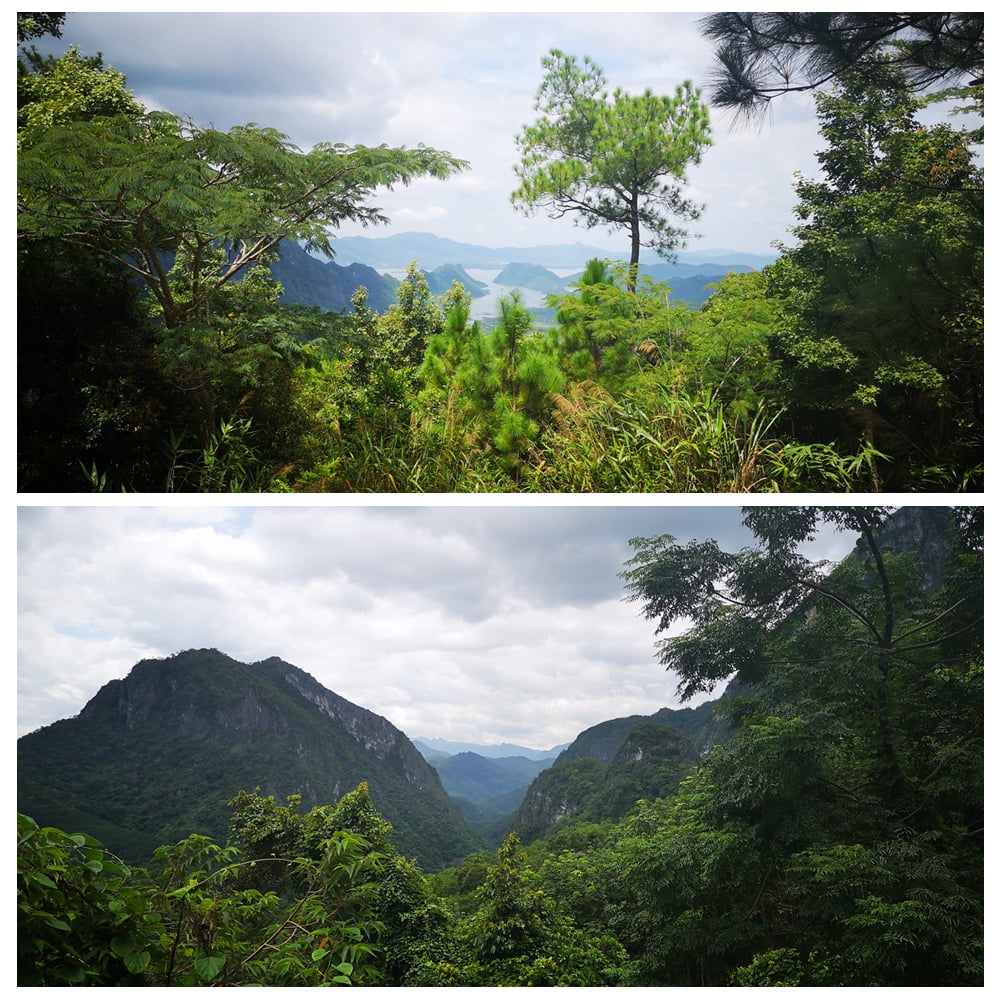
At about 12:10 we arrived at the Nandu River Ten-mile Gallery Scenic Spot (南渡江十里画廊景区) and the Emperor Cave (皇帝洞), which is on the hill by the river. Both were in a primitive state with no entrances or entrance fees.
NanduRiver starts at Bawangling, Wangxia Village, Changjiang County and ends atDonghe Village, Lingshan Town, Haikou City, with a length of 352.55km. It wasjust green mountains with clear water here without any boats or otheractivities. It is said if you want to take a cruise, you need to contact theboatmen in advance.
NanduRiver
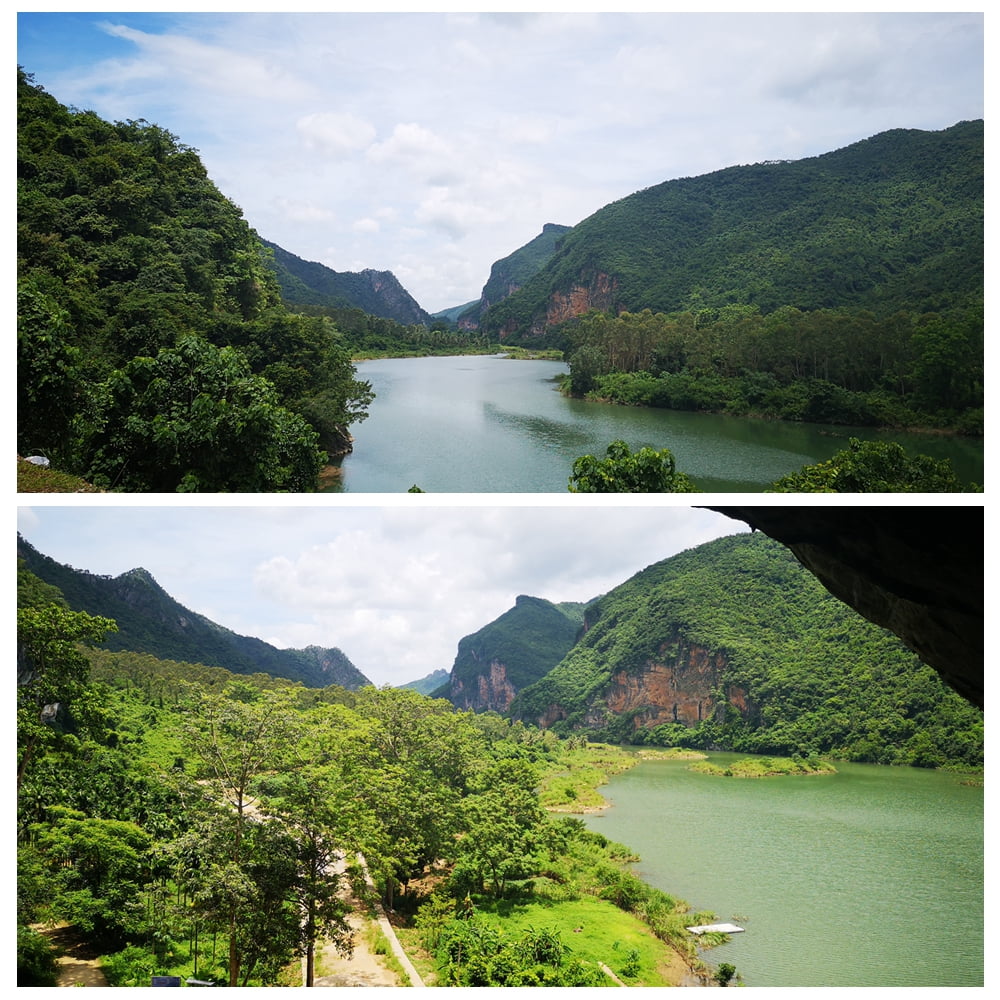
Emperors Cave is a county-level key cultural relic unit. Relics from the Neolithic to the Qin and Han Dynasties have been found here. The floor is made up of thick layers of bird droppings that local farmers bring to their farms. There are some stalactites inside the cave and the ground is very slippery. There is a nice view of the river from the cave entrance.
EmperorCave
At 12:50 we set off for our next destination - Hongshui Village (洪水村), which took us about 10 minutes. This is said to be the most remote area in Changjiang County and is called the "Tibet of Hainan". Because of its remoteness, the culture of the Li minority has been preserved here. It has the most and best preserved boat-shaped thatched cottages of the Li nationality. While the introduction on the wall says there are 153 cottages, I saw about 20. Most of the cottages are dilapidated and uninhabitable. 15 of them have been renovated and preserved as intangible cultural heritage, called the "living fossil" of Li culture. 8 of the 15 huts have been converted into guesthouses (funded by a man from Hong Kong) with showers and flush toilets and can serve a maximum of 10 customers. Guests can shop in the adjacent new village and cook for themselves. I was told that there are only 1 or 2 bookings a year. The facilities are quite basic, so I am not sure about the quality.
Boat Shaped Thatched Roof Cottages
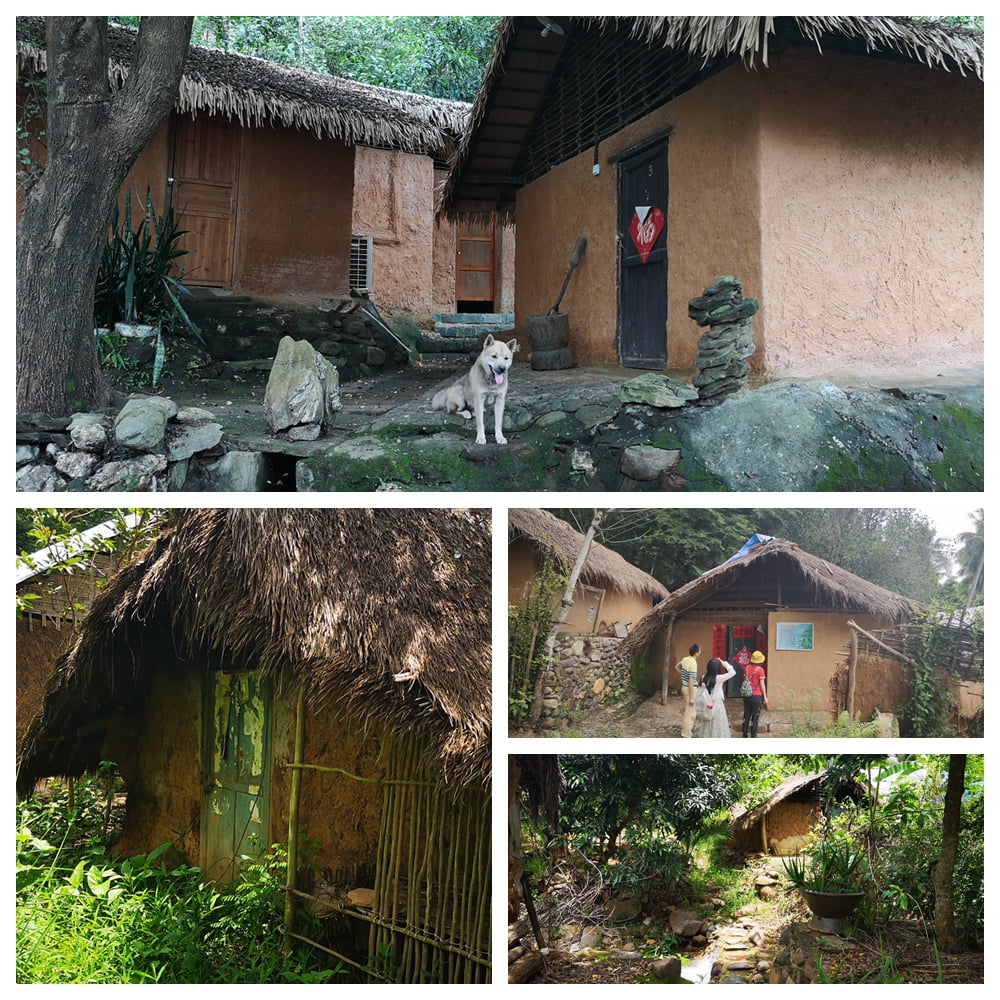
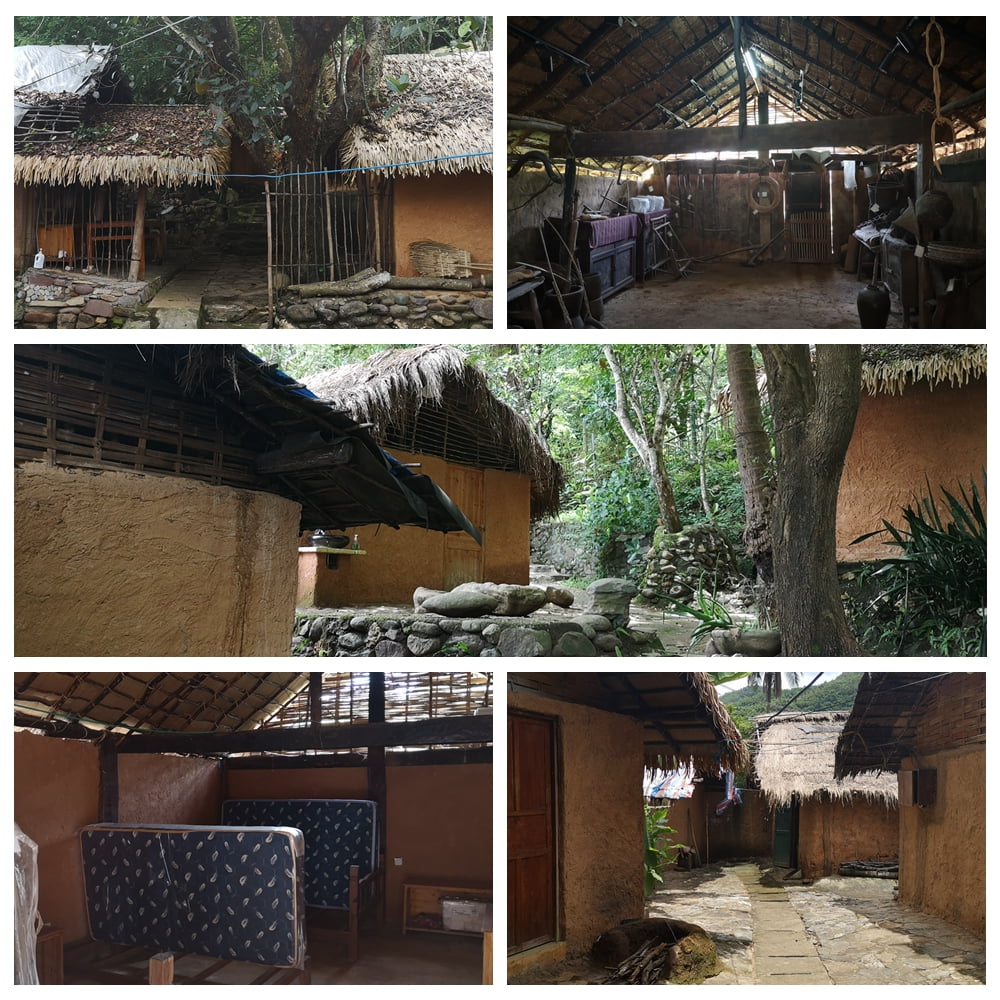
All the villagers have moved to the neighbouring new village, which is much busier. Some people were chatting in the street, others were driving the truck, others were cleaning the fishing net, and chickens and ducks were wandering around. Not all the villagers understood Mandarin. One old lady, over 70, had two blue lines on her face and a blue tattoo on her legs. Li women from different tribes used to have different tattoos, symbols of their tribes. Now the youngest women with tattoos are over 70, and soon the tattoos will be history.
Hongshui Village
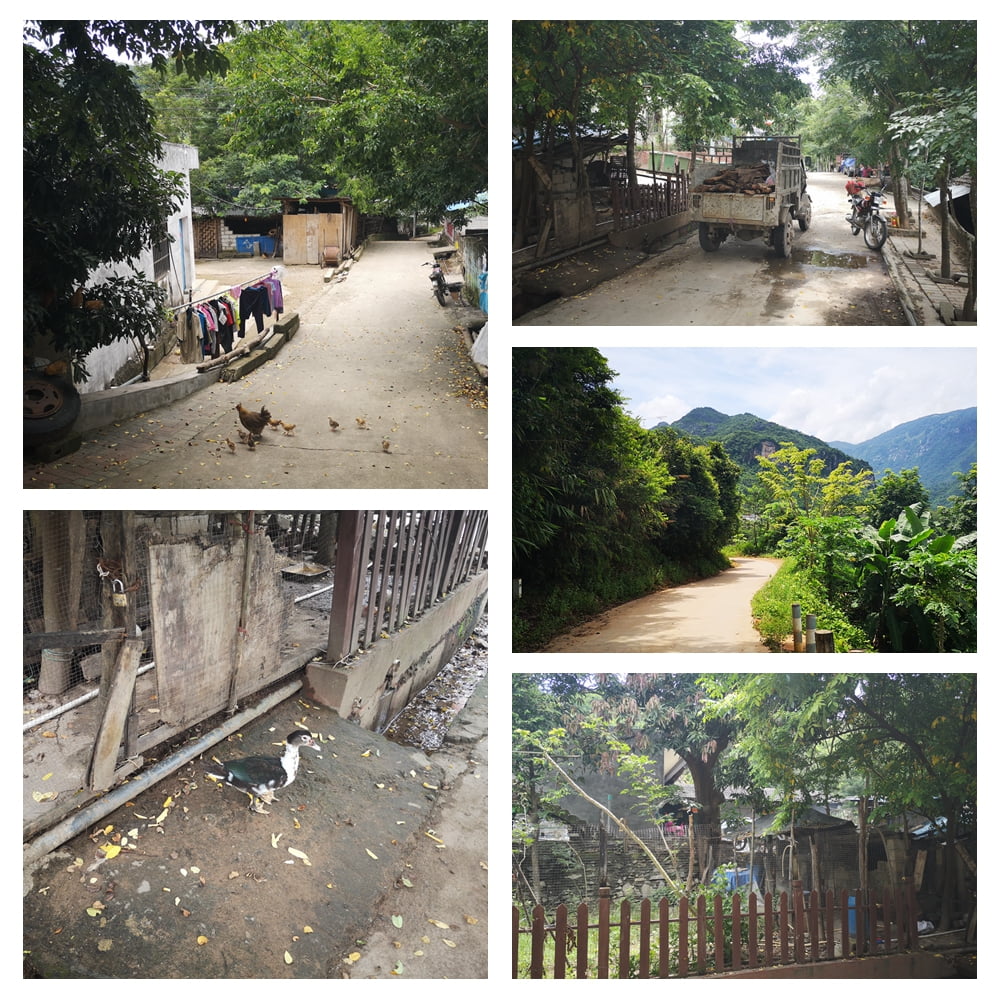
We left Hongshui Village at 13:40 and arrived at Qicha Miao Nationality Village (七叉村苗自然村), which is on the way back to Changjiang County, at 14:40.
There are some 2-storey buildings that are used as homestays. There are 2 or 3 suites in each building and each suite has 3 bedrooms and a private bathroom suitable for hosting a family. The sign on one of the doors will give the name of the owner of the house and the name of the person and unit helping with the homestay project.
Qicha Miao Nationality Village Homestay
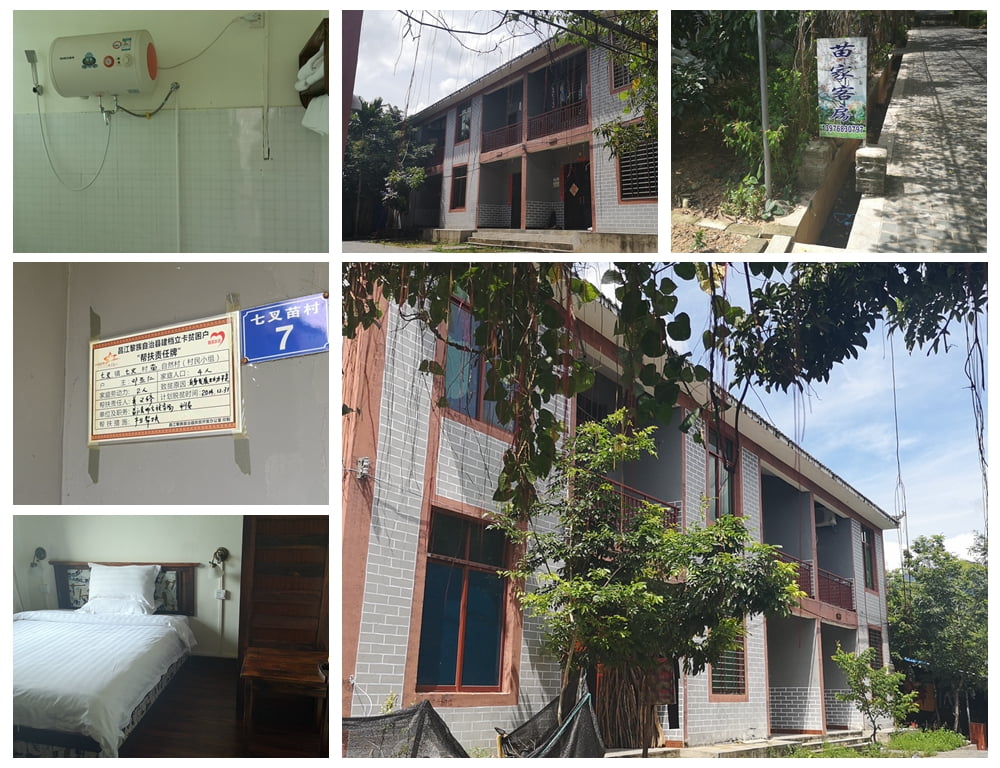
At the end of the road, by the river, is Mumian(Kapok) Gueshouse(木棉客栈), a 2-storey building. Each room has an ensuite bathroom and a balcony overlooking the countryside, including the river. The owner and staff were very hospitable. The high season for this guesthouse is February and March when the kapok trees are in bloom and the whole countryside turns red.
Mumian Gueshouse
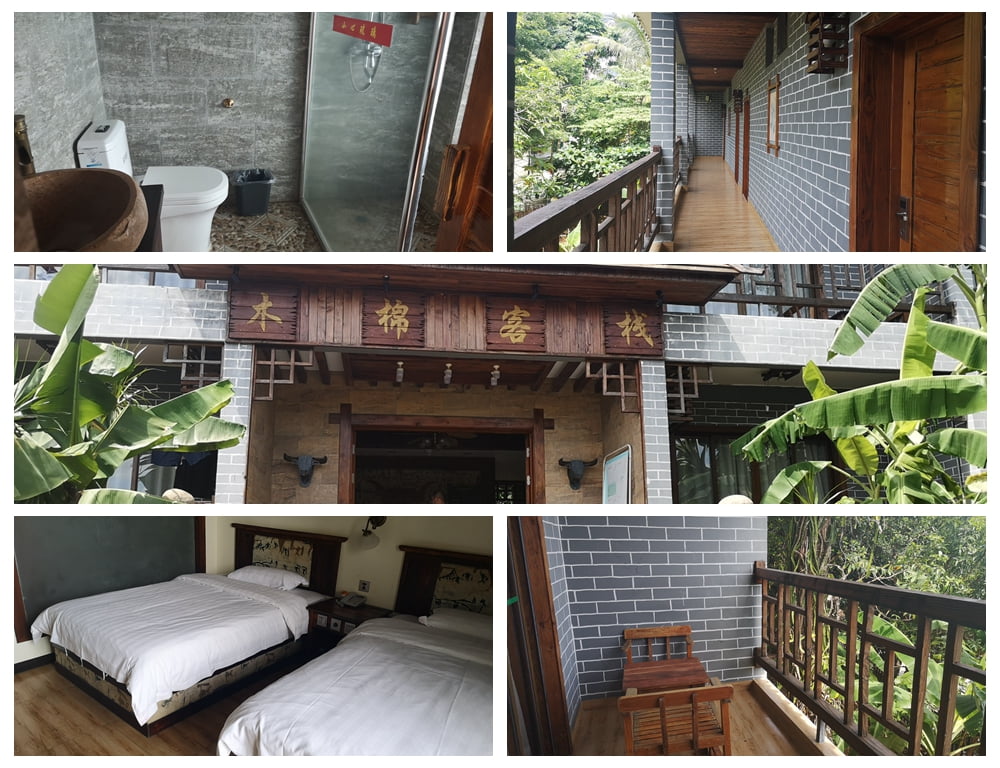

After that we visited another guesthouse which is less well maintained. Then we had lunch at a restaurant run by a Li man, Mr Liu. The restaurant is called Benlata(奔拉踏农家乐), which means "come to eat" in Li language, and is located in the middle of the farms where you can see the farmers working. The view is very nice and it even has its own fish ponds.
Benlata Restaurant
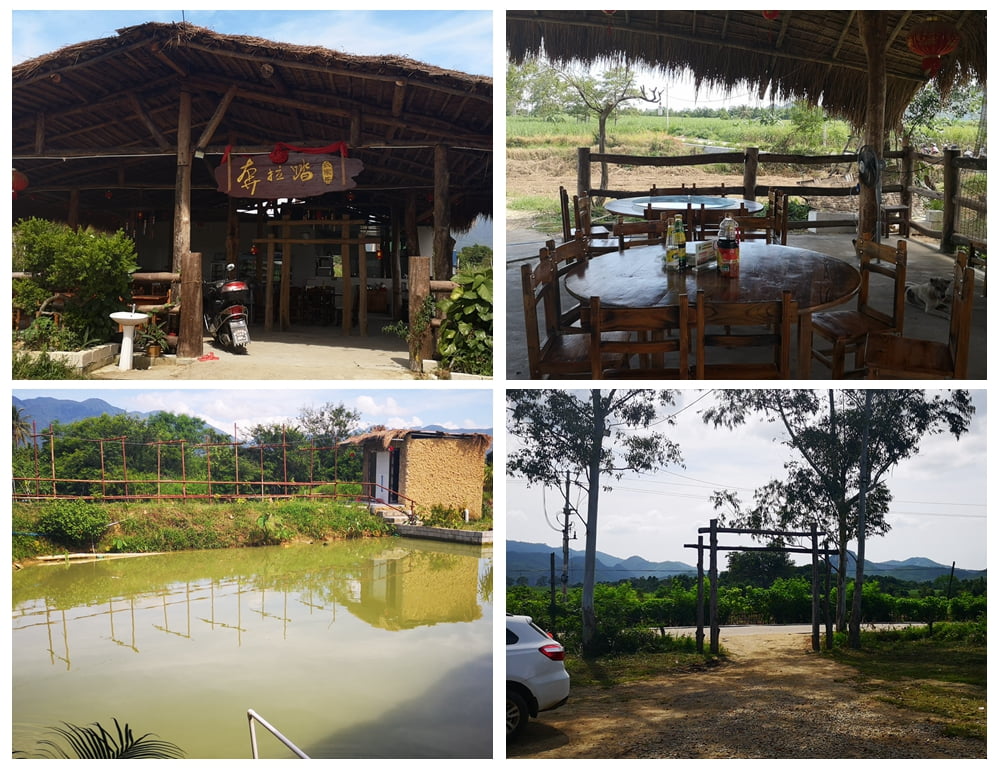
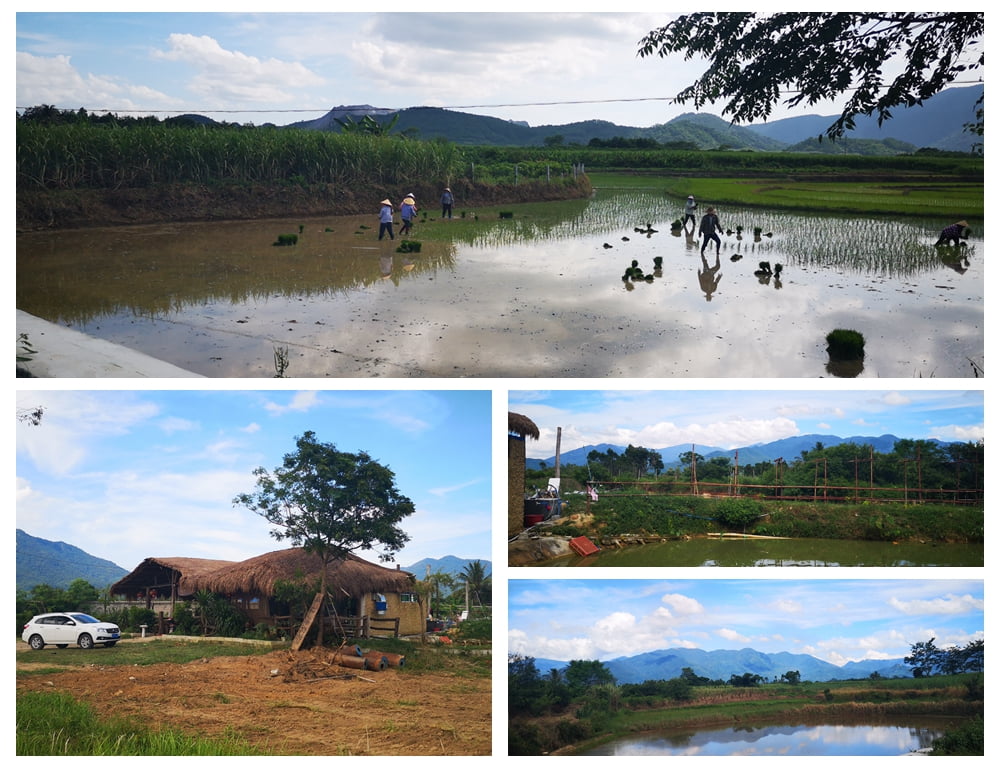
At around16:40 we left Benlata and had a one hour drive to Baotu Village(保突村), 4km north of the Changjiang County. The Li Nationality Pottery Museum(黎族原始制陶馆) is located here. The Li Pottery making was listed inthe first batch of intangible cultural heritage protection projects by the State Councilin 2006 and as introduced by the museum there are only 38 people who know howto make pottery in the old Li way. We saw several women working here and welearned that the skill has been passed down only to women.
Li Nationality Pottery Museum
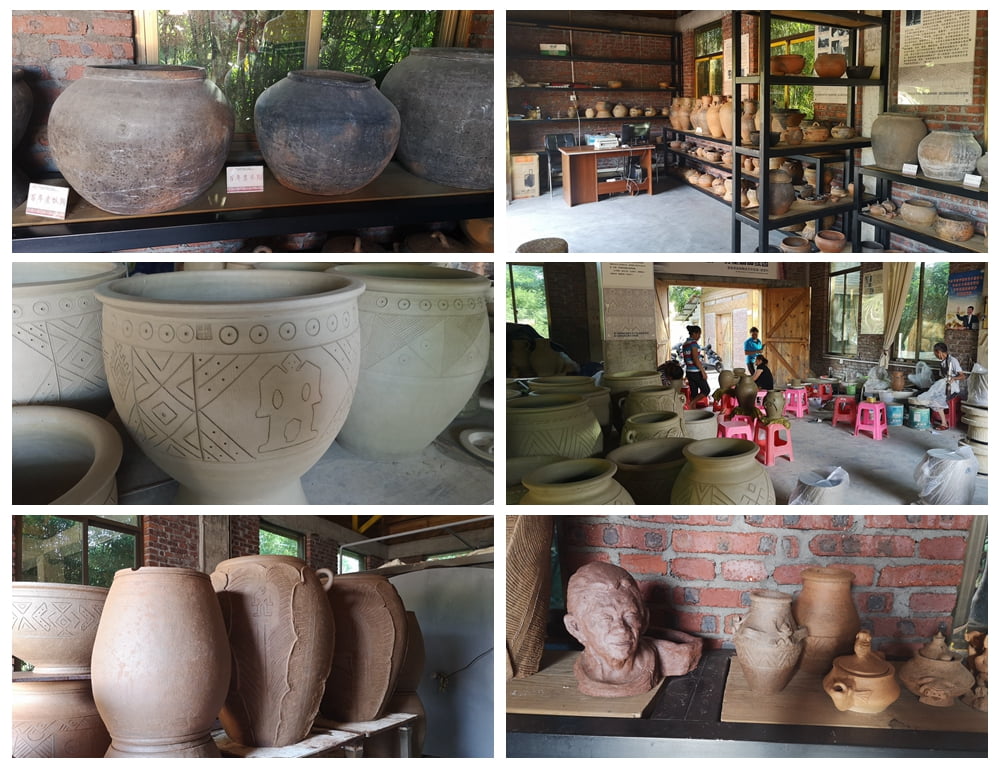
We leftthe museum at 17:50 and arrived at our hotel in Qizi Bay at 18:30.
My suggestions for a tour:
D1 and D2 Stay in Qizi Bay
D3 Depart Qizi Bay in the morning, take pictures on the way and stop at Nandu River Ten-mile Gallery Scenic Spot. Then continue to Hongshui Village to see the boat-shaped thatched cottages. Have lunch with the villagers or at the Benlata Restaurant. Overnight at Mumian Guesthouse. Free time to explore Bawangling Scenic Spot, which is within walking distance.
D4 Depart for next destination.
By Angie Guo - Charmission Travel
